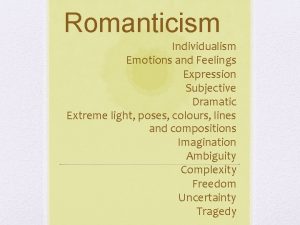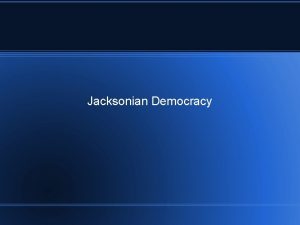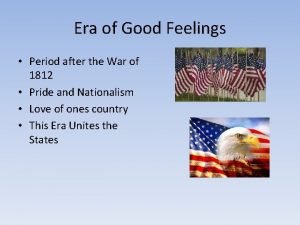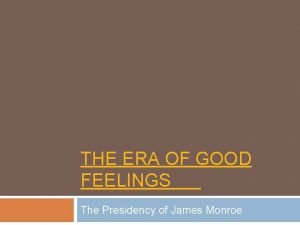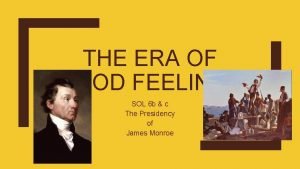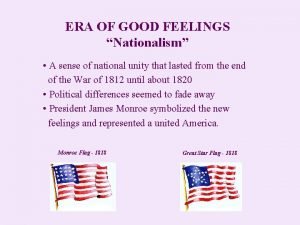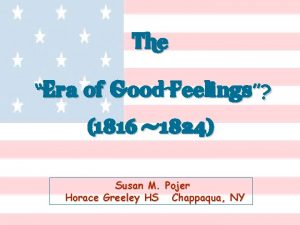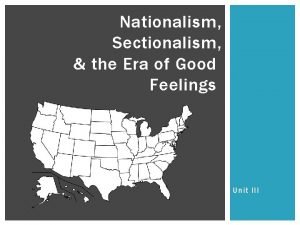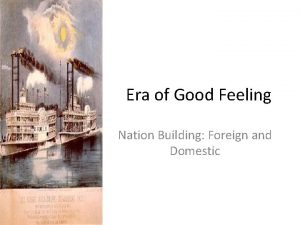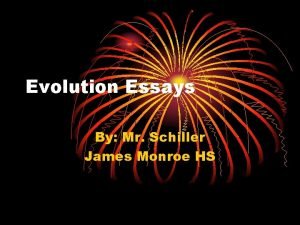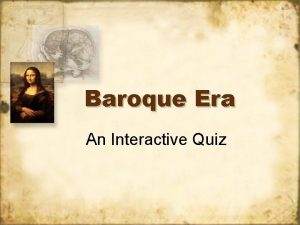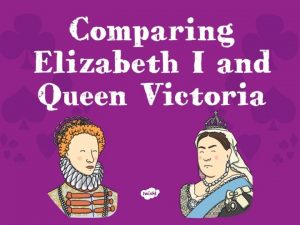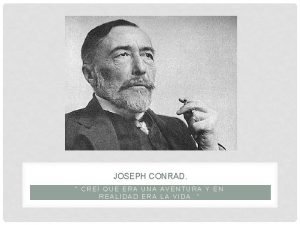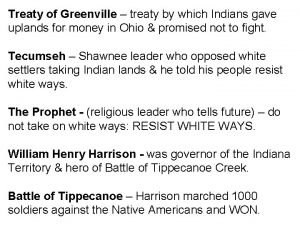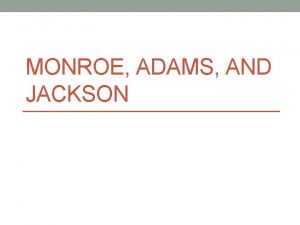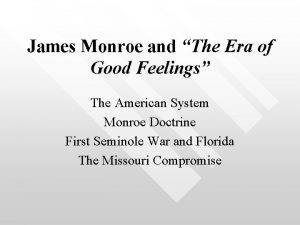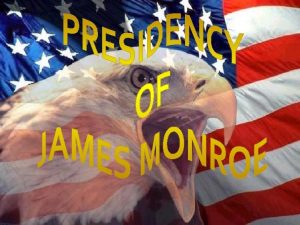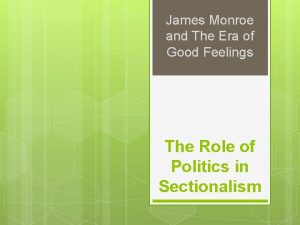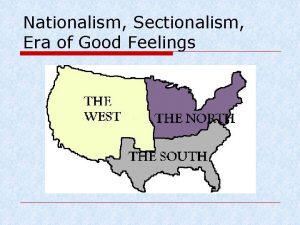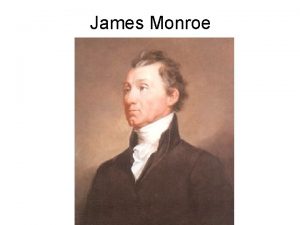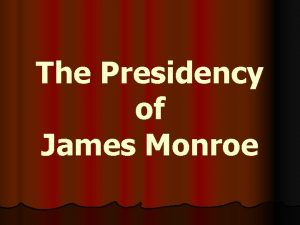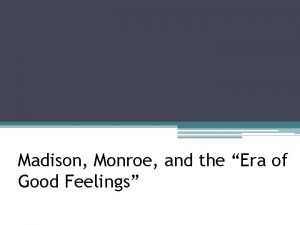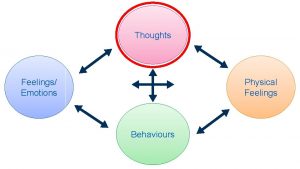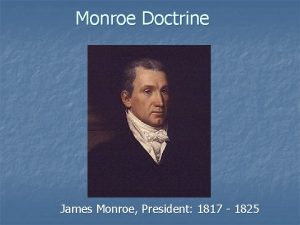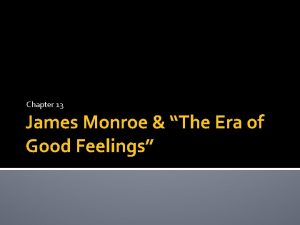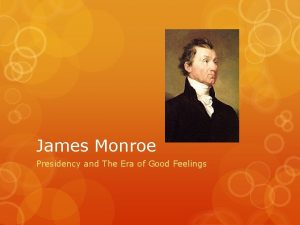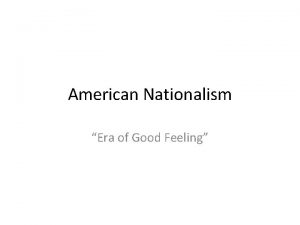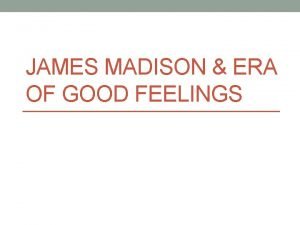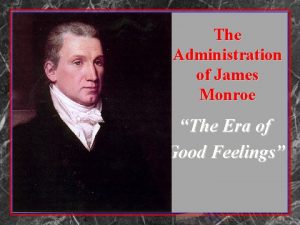The Era of Good Feelings A James Monroe























- Slides: 23

The Era of Good Feelings A James Monroe Museum Virtual Exhibit

Introduction James Monroe was the 5 th President of the United States. After his first inauguration, a Boston newspaper coined his term the “Era of Good Feelings. ” His presidency is known for a time of nationalism, growth and political unity. This exhibit will examine different aspects of Monroe’s two terms to evaluate whether or not Monroe’s Presidency should be considered an Era of Good Feelings.

|The Exhibits| Politics People Groups Click an Object to Enter Economics

Politics • During his presidency, Monroe completed a tour of the states. • Monroe appointed Cabinet members of differing views in an attempt to ease tensions. • The Federalist Party dissolved, marking the end of the two parties until after Monroe’s presidency. He ran for re-election unopposed.

James Monroe’s Tour The setting of this painting is the north facade of the President's House. James Monroe is the tall figure in the center of the painting at the base of the steps. The group of people around him are "well wishers" gathered to greet the president on his return from his tour of the northern states in 1817. “Return of Monroe to Washington from a Northern Excursion, 1817” by Pietro Bonanni

Interpreting the Primary Source • What is the mood of this picture? • What does this picture tell you about the start of Monroe’s presidency? • How might the artist’s perspective play a role in interpreting the painting? What do you think the artist’s opinion was on the scene?

Expansion and Relations • The Rush-Bagot Treaty of 1817 demilitarized the British and American borders. • New states were admitted to the Union during Monroe’s presidency: Mississippi 1817, Illinois 1818, Alabama 1819, Maine 1820, Missouri 1821.

Treaties http: //mrcapwebpage. com/VCSUSHISTORY/eraofgoodfeelings. html

Questions • How would a one-party system impact the way the government operates? • How did America’s border relations influence American’s view of their country?

Conclusion • The dissipation of the Federalist party provided a brief period of relative political unity. • After the War of 1812, America strengthened its borders. This ended existing strife with Spain and England. These resolutions allowed America to focus on domestic issues.

|The Exhibits| Politics People Groups Click an Object to Enter Economics

Native American Relations and Slavery • 1818: Seminole Indians attack American soldiers and their families in Georgia. In response, Andrew Jackson invades and captures Pensacola, without presidential authority from Monroe returns Florida to the Spanish, but with a warning that Spain must control the Indian population there or cede Florida to the United States. • 1819: Spain cedes Florida to the United States in the Adams -Otis Treaty. • 1820: The Missouri Compromise draws a regional line prohibiting slavery in the North and allowing slavery in the South. Maine is admitted to the Union as a free state and Missouri as a slave state.

Round bronze medal with profile of James Monroe and the words "James Monroe President of the U. S. A. D. 1817" on the front. Reverse has two hands clasped with crossed peace pipe and tomahawk above and words "Peace and Friendship. " Presented to various Native American leaders. JM 76. 325 Hand-beaded pouch-type bag. Presented to Elizabeth Monroe at the White House by Pawnee leaders. JM 76. 306

Questions for Discussion How did the United States view Native Americans and slaves during Monroe’s presidency? How do these events involving Native Americans and slavery impact your interpretation of the “Era of Good Feelings? ”

|The Exhibits| Politics People Groups Click an Object to Enter Economics

Economics • The American System – high tariffs – Second National Bank – focus on internal improvements (roads and canals) • The Panic of 1819

Reading a Primary Source Second Inaugural Address Washington, March 5, 1821 "Under the present depression of prices, affecting all the productions of the country and every branch of industry, proceeding from causes explained on a former occasion, the revenue has considerably diminished, the effect of which has been to compel Congress either to abandon these great measures of defense or to resort to loans or internal taxes to supply the deficiency. On the presumption that this depression and the deficiency in the revenue arising from it would be temporary, loans were authorized for the demands of the last and present year… continued on next slide

Reading a Primary Source “Anxious to relieve my fellow-citizens in 1817 from every burthen which could be dispensed with, and the State of the Treasury permitting it, I recommended the repeal of the internal taxes, knowing that such relief was then peculiarly necessary in consequence of the great exertions made in the late war. I made that recommendation under a pledge that should the public exigencies require a recurrence to them at any time while I remained in this trust, I would with equal promptitude perform the duty which would then be alike incumbent on me… continued on next slide

Reading a Primary Source “By the experiment now making it will be seen by the next session of Congress whether the revenue shall have been so augmented as to be adequate to all these necessary purposes. Should the deficiency still continue, and especially should it be probable that it would be permanent, the course to be pursued appears to me to be obvious. I am satisfied that under certain circumstances loans may be resorted to with great advantage. I am equally well satisfied as a general rule, that the demands of the current year, especially in time of peace, should be provided for by the revenue of that year. ” JAMES MONROE

Reading the Primary Source • What factors does Monroe site for the cause of the economic crisis? • What is Monroe’s attitude regarding the potential for an economic recovery? • What measures does he recommend to improve the economy?

Questions for Discussion What caused did the Panic of 1819? How might it have altered Americans’ views on the state of their nation?

Conclusion • America enjoyed a period of economic prosperity until the Panic of 1819, the result of high tariffs and national bank policies. • Monroe viewed this event as the natural fluctuation of a growing economy.

Conclusion You decide: Was James Monroe’s presidency an Era of Good Feelings? • What aspects of Monroe’s presidency were harmonious? • What factors might make Monroe’s presidency not an Era of Good Feelings?
 Feelings feelings feelings
Feelings feelings feelings What does era of good feelings mean
What does era of good feelings mean Era of good feelings simple definition
Era of good feelings simple definition Era of good feelings political cartoon
Era of good feelings political cartoon Era of good feelings
Era of good feelings Era of good feelings
Era of good feelings Era of good feelings facts
Era of good feelings facts Era of good feelings nationalism and sectionalism
Era of good feelings nationalism and sectionalism Era of good feelings timeline
Era of good feelings timeline Whats the era of good feelings
Whats the era of good feelings James monroe essay
James monroe essay Zoroastrianism good thoughts good words good deeds
Zoroastrianism good thoughts good words good deeds Hey hi good morning
Hey hi good morning Good afternoon teacher
Good afternoon teacher If you are
If you are Tardes buenas tardes
Tardes buenas tardes Era quiz: the baroque era
Era quiz: the baroque era Victorian and elizabethan era
Victorian and elizabethan era Creí que era una aventura y en realidad era la vida
Creí que era una aventura y en realidad era la vida Era uma estrela tão alta era uma estrela tão fria
Era uma estrela tão alta era uma estrela tão fria Scsi unit fbi
Scsi unit fbi Russell odom and clay lawson
Russell odom and clay lawson Pallid politics in the gilded age
Pallid politics in the gilded age Monroe doctrine political cartoon meaning
Monroe doctrine political cartoon meaning
